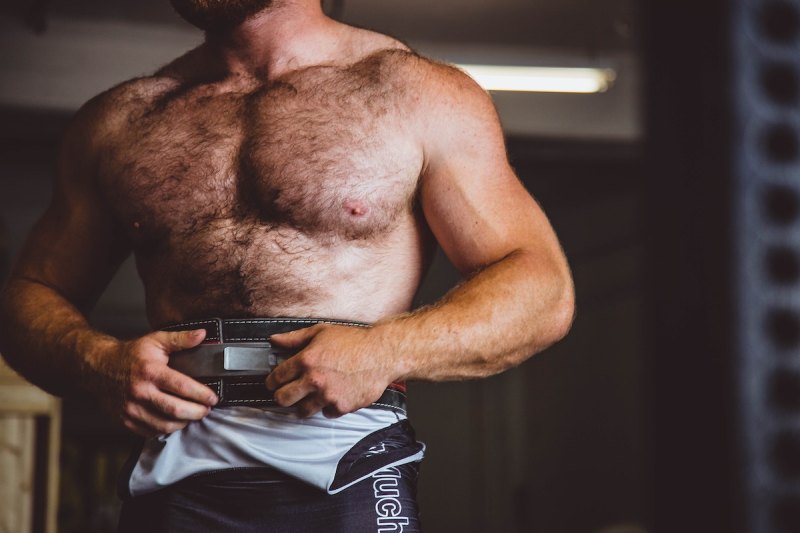Visceral fat, the deep belly fat surrounding your abdominal organs, can significantly impact your health if left unchecked. Unlike subcutaneous fat, which sits under the skin, visceral fat is linked to serious conditions like type 2 diabetes, inflammation, and heart disease, the leading cause of death.
As a trainer and nutritionist, I have worked with many clients who are concerned about visceral fat. The good news is that you can lower visceral fat by implementing targeted strategies that improve overall health. Below, we’ve outlined everything from how to measure to how to lose visceral fat. Continue reading to learn more!
What is visceral fat?

Visceral fat is a type of fat stored deep inside the abdominal cavity, wrapping around organs like the liver, pancreas, and intestines. This type of fat is necessary for cushioning organs. However, excessive amounts can lead to health risks such as insulin resistance, cardiovascular issues, and even hormonal imbalances.
Visceral fat is often invisible to the naked eye, making it harder to detect without specific assessments. Yes, people with a lot of visceral fat typically have bigger bellies, but you can’t actually tell how much visceral fat a person has just by looking at them. We’ll get into how to measure visceral fat soon.
What is the difference between visceral and subcutaneous fat?

The primary difference between visceral and subcutaneous fat involves where they are stored in the body and the impact they have on your health.
Subcutaneous fat is stored directly under the skin and acts as an energy reserve and insulation. It’s the type you can pinch between your fingers. In contrast, visceral fat is hidden deep within the abdomen and is involved in the body’s metabolic processes, releasing inflammatory chemicals and hormones that can disrupt bodily functions.
Visceral fat poses a higher risk for chronic diseases compared to subcutaneous fat.
What are the causes of visceral fat?

Here are some reasons visceral fat accumulates:
- Poor diet: Consuming excess calories, especially from sugary, processed foods and unhealthy fats, can promote visceral fat accumulation.
- Lack of exercise: Physical inactivity reduces calorie expenditure, leading to fat storage, including around organs.
- Genetics: Some people are genetically predisposed to store more fat in the abdominal area.
- Hormonal imbalances: Changes in hormones, particularly during menopause or from stress (high cortisol levels), can lead to visceral fat gain.
- Excess alcohol intake: Drinking alcohol in excess is linked to an increase in belly fat. A study that looked at how alcohol consumption affects people with Type 1 diabetes found that individuals will have a higher visceral fat mass as their alcohol consumption goes up.
- Age: Aging slows metabolism and alters fat distribution, often leading to increased visceral fat.
- Chronic stress: High stress levels contribute to elevated cortisol, which encourages fat storage in the abdominal region.
- Sleep deprivation: Poor sleep patterns can disrupt hormones that regulate hunger and metabolism, promoting visceral fat gain.
How to know how much visceral fat you have

Typically, the amount of visceral fat you have correlates with your body fat. This means that the more general body fat you have, the more visceral fat you have. Here are some ways to measure both body fat and visceral fat.
- Waist measurement: Use a measuring tape to measure around your waist at the level of your belly button. A waist size above 35 inches for women or 40 inches for men often indicates excess visceral fat.
- Body fat scales: Smart scales with bioelectrical impedance can estimate visceral fat levels. However, the accuracy of body fat scales can vary.
- Body mass index: A high BMI may suggest increased visceral fat, but it does not differentiate between fat types.
- Medical imaging: CT scans or MRI scans provide the most accurate measurement of visceral fat. These tests are typically done for medical reasons and are expensive.
- DEXA scan (Dual-Enegerty X-ray Absorptiometry): This measures body composition, including visceral fat, but is less commonly available than other methods.
- Physical indicators: A protruding belly, even in individuals who are otherwise lean, can suggest higher visceral fat levels.
The most accurate tool for measuring body fat percentage is the DEXA scan. However, other tools offer a good enough estimate based on multiple factors. Cleveland Clinic suggests figuring out your visceral fat level by calculating 10% of your body fat percentage.
Tips for how to lose visceral fat

Adopt a healthy diet
To lose visceral fat, focus on reducing your intake of sugary and processed foods, such as refined carbohydrates, sodas, and packaged snacks. Instead, prioritize fiber-rich options like whole grains, fruits, vegetables, and legumes, which help you feel full longer and improve gut health. Include lean protein sources like chicken, fish, tofu, and beans to preserve muscle mass while burning fat. Adding healthy fats, such as those found in nuts, seeds, avocados, and olive oil, can also support overall fat loss.
Increase physical activity
Regular exercise can help reduce visceral fat. Aerobic activities like brisk walking, running, cycling, and swimming are particularly effective. Strength training also helps build muscle, which increases calorie burn and reduces fat storage.
Manage stress levels
According to a 2018 study, “the combination of high chronic stress and high impulsive risk-taking may increase risk for visceral fat gain over time.” To combat this high or chronic stress, you can practice mindfulness techniques such as meditation or yoga and engage in activities that help you relax. Maintaining a balanced work-life routine is also essential for stress management.
Get quality sleep
Getting seven to nine hours of quality sleep per night helps to regulate the hormones that control appetite and metabolism. Establishing a consistent sleep schedule and limiting screen time before bed can help improve your sleep quality.
Limit alcohol consumption
Excess alcohol consumption contributes to visceral fat accumulation. Cutting back on alcohol can significantly reduce your calorie intake and improve fat loss.
Stay hydrated
Drinking water throughout the day supports your metabolism and helps prevent overeating. Staying hydrated is a simple but effective way to aid fat loss.
Frequently asked questions

What burns the most visceral fat?
Aerobic exercises like jogging and swimming are highly effective for targeting visceral fat. Also, resistance training helps to build muscle, which helps one burn more calories at rest and is instrumental in preventing fat gain.
What foods break down visceral fat?
Foods rich in fiber, lean protein, and healthy fats can help reduce visceral fat. Examples include oats and whole grains, leafy greens like spinach and kale, fatty fish like salmon, and berries and other low-sugar fruits. These foods promote satiety, improve gut health, and help regulate blood sugar levels.
How do you lose visceral fat in two weeks?
While significant visceral fat loss in two weeks may not be realistic, you can make noticeable progress by cutting out added sugars and refined carbs, exercising daily with a mix of cardio and strength training, eating high-protein, high-fiber meals to curb appetite, drinking plenty of water and reducing alcohol intake, and prioritizing sleep and managing stress levels.




